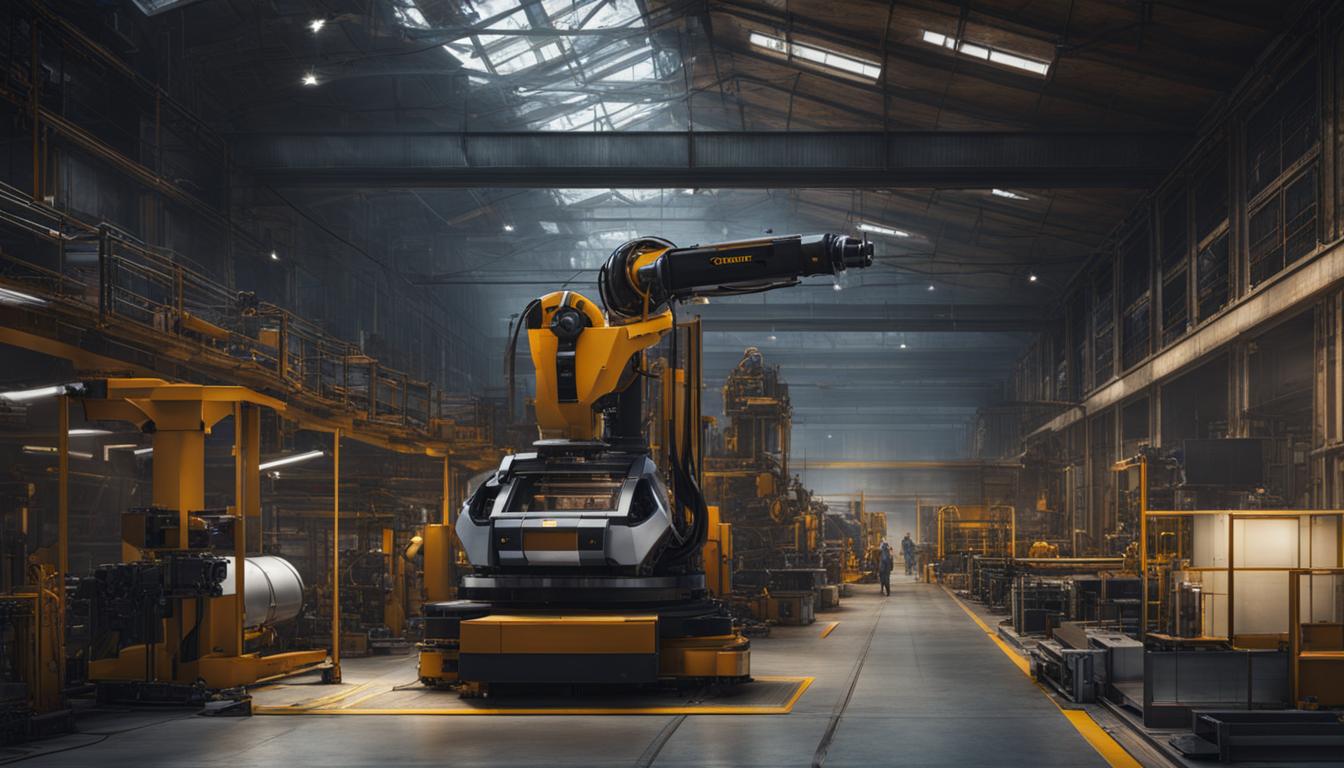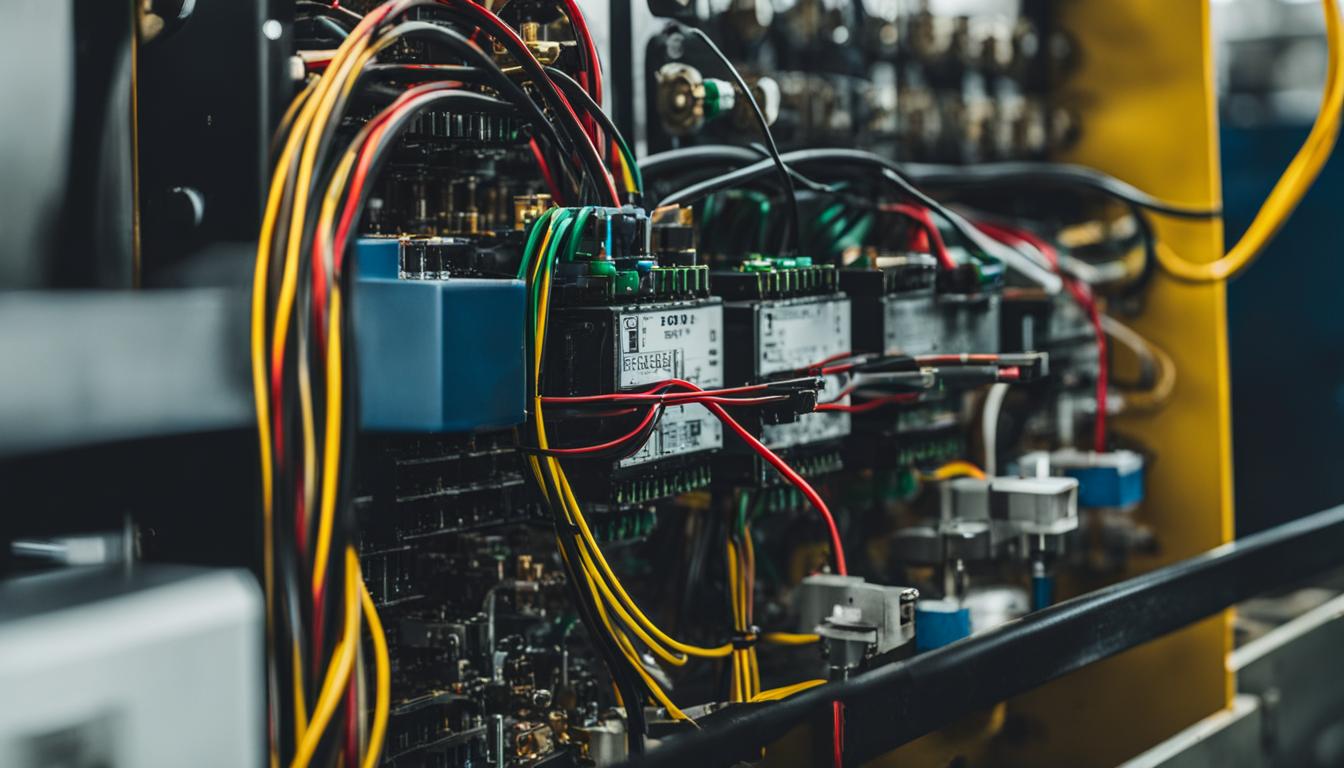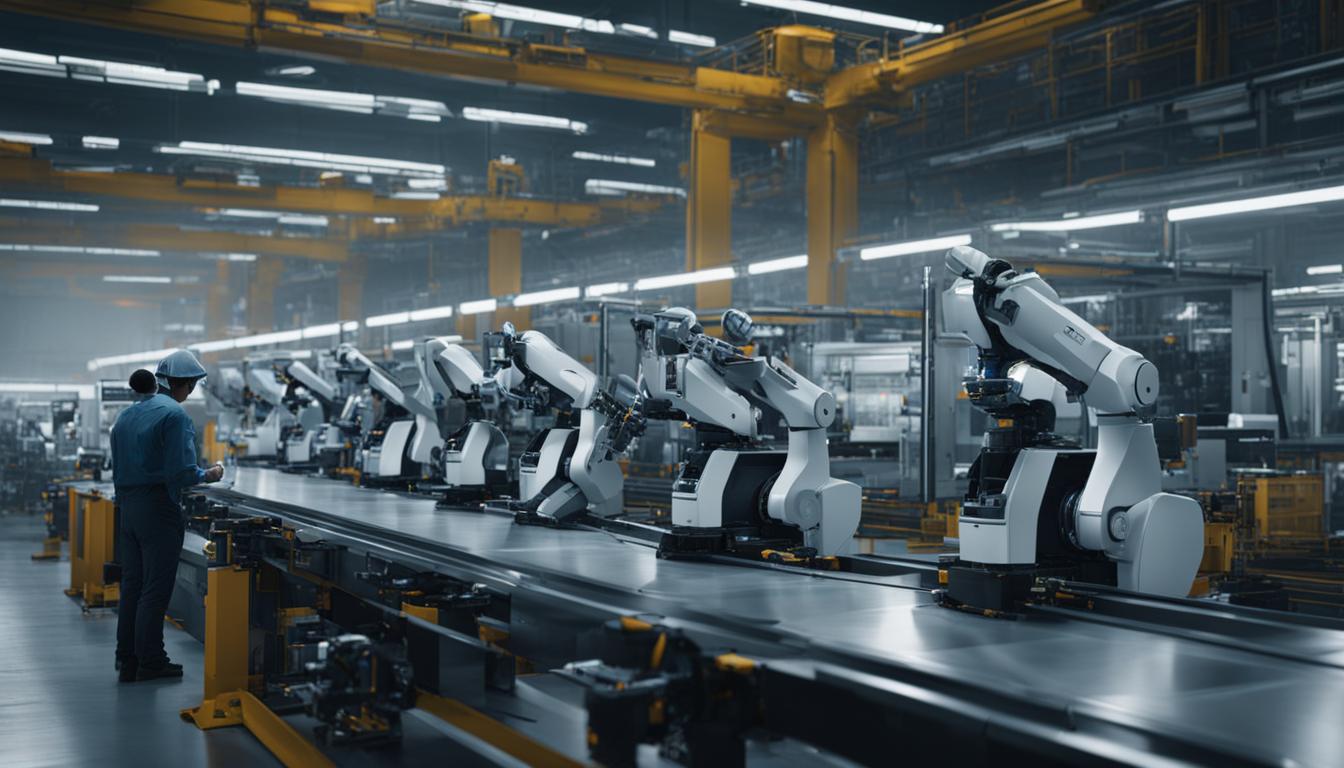The history of sewing machines is a fascinating journey that traces back thousands of years to the art of hand sewing. Over time, this ancient practice evolved into the mechanical marvels we know today. From the invention of early sewing machines to the continuous development of sewing technology, pioneers in the industry have paved the way for innovations that revolutionized the textile industry and transformed our lives.
The timeline of sewing machine development is marked by countless inventors who dared to dream of a more efficient way to stitch fabrics. Early attempts were met with failure, but the persistence and ingenuity of these pioneers eventually led to breakthroughs that propelled the sewing machine industry forward.
One of the earliest recorded designs of a sewing machine came in 1790 by Thomas Saint, although there is no known functioning prototype. However, it was Barthelemy Thimonnier’s successful invention of the first sewing machine in 1830 that truly kickstarted the revolution. His machine utilized a hooked needle and a single thread, creating a chain stitch that transformed the production of clothing.
The evolution of sewing machines continued as inventors improved upon Thimonnier’s design. Elias Howe introduced the lockstitch in 1845, and Isaac Merritt Singer made significant advancements in 1851 with the addition of a foot pedal and up-and-down needle. These innovations paved the way for an industrial revolution in the textile industry, enabling the mass production of clothing and making sewing more accessible to households worldwide.
The history of the sewing machine is not without its disputes and legal battles between inventors, as each sought to protect and profit from their creations. However, their relentless pursuit of progress and innovation ultimately shaped an industry that continues to impact our lives.
Key Takeaways:
- The history of sewing machines dates back thousands of years to the practice of hand sewing.
- Inventors like Barthelemy Thimonnier, Elias Howe, and Isaac Merritt Singer played pivotal roles in the development of sewing machine technology.
- The sewing machine revolutionized the textile industry by enabling mass production and making sewing more accessible.
- Patent disputes and legal battles shaped the history of sewing machines, but innovation prevailed.
- The sewing machine continues to evolve, with brands like Juki, New Home, Janome, and Brother pushing the boundaries of technology.
The First Sewing Machines – Fact or Fiction?
The question of who invented the first sewing machine is a subject of debate and controversy. While Thomas Saint is often credited with inventing the first sewing machine in 1790, there is no evidence of a physical model. However, Barthélemy Thimonnier is recognized as the inventor of the first successful sewing machine in 1830, as his machine was used in a sewing machine factory in France. Elias Howe made significant contributions with the introduction of the lockstitch in 1845, and Isaac Merritt Singer further improved the sewing machine in 1851 with the addition of the foot pedal and up-and-down needle.
These inventors, along with others, played crucial roles in the development and revolution of the sewing machine, paving the way for its widespread use in the textile industry and in households around the world.
“The invention of the sewing machine was a turning point in the history of textile manufacturing. It brought about unprecedented efficiency and productivity, revolutionizing the way garments were made. From the humble beginnings of Thimonnier’s successful machine, the sewing machine industry rapidly expanded, leading to the sewing machine revolution we know today.” – Textile Historian
To understand the true origins of the sewing machine, we must delve into the stories of its inventors and their contributions. Let us explore the journeys of Thomas Saint, Barthélemy Thimonnier, Elias Howe, Isaac Merritt Singer, and the incredible sewing machine revolution they sparked.
The Contenders:
| Inventor | Timeline | Contributions |
|---|---|---|
| Thomas Saint | 1790 | No physical model of the sewing machine |
| Barthélemy Thimonnier | 1830 | Invented the first successful sewing machine used in a factory in France |
| Elias Howe | 1845 | Introduced the lockstitch |
| Isaac Merritt Singer | 1851 | Added the foot pedal and up-and-down needle |
As we can see, the history of the sewing machine is a tapestry woven with the talents of various inventors. While the exact origins may be shrouded in ambiguity, what is undeniable is the impact these inventors had on shaping the sewing machine industry. Their innovations propelled the textile industry forward and set the stage for a new era of garment production.
As we move forward in our exploration of the history of sewing machines, it is important to recognize the vital role each inventor played in transforming this humble invention into a revolutionary force.
Evolution of Sewing Machine Technology
The 19th century witnessed a significant evolution in sewing machine technology, driven by the ingenuity of inventors and the changing needs of the textile industry.
Allen B. Wilson and Nathaniel Wheeler played pivotal roles in the advancement of sewing machines. They introduced the rotary hook, replacing the traditional shuttle design. This innovation significantly increased the speed and efficiency of sewing machines, paving the way for faster and more precise stitching.
Another important development came from John Bradshaw with his invention of the four motion feed. This mechanism improved fabric feeding, making sewing machines more accessible to a wider audience. Sewing became more efficient, saving time and effort for both professionals and hobbyists.
One of the revolutionary breakthroughs in sewing machine technology was the implementation of interchangeable parts. Eli Whitney pioneered this concept in firearm production, and it was later adopted by sewing machine manufacturers like Wheeler & Wilson and Singer. This innovation revolutionized the manufacturing process, allowing for easier repairs and replacements. It also facilitated mass production in the textile industry, marking a crucial milestone in the Industrial Revolution.
The incorporation of interchangeable parts brought efficiency, standardization, and cost-effectiveness to sewing machine production. This development enabled manufacturers to create quality machines at a faster pace, meeting the increasing demand for sewing machines during the industrial revolution.
The Impact of Interchangeable Parts
“The introduction of interchangeable parts in sewing machine production revolutionized the industry, streamlining manufacturing processes and increasing accessibility for consumers.” – Sewing Machine Historian
| Advancement | Inventor | Impact |
|---|---|---|
| Rotary Hook | Allen B. Wilson and Nathaniel Wheeler | Increased speed and efficiency of sewing machines |
| Four Motion Feed | John Bradshaw | Improved fabric feeding, making sewing machines accessible to a wider audience |
| Interchangeable Parts | Eli Whitney, Wheeler & Wilson, Singer | Revolutionized manufacturing, facilitated repairs and replacements, enabled mass production |

These technological advancements in sewing machine technology laid the foundation for the modern machines we use today. They transformed the textile industry, making sewing more efficient, accessible, and integral to everyday life. The evolution of sewing machine technology during the 19th century propelled society into the era of mass production and revolutionized the way garments and textiles are manufactured.
Impact of Electricity on Sewing Machines
The introduction of electricity in the late 19th century had a transformative impact on sewing machines. With the advent of electric power, manual operations were replaced, and sewing machines became faster and more efficient, revolutionizing the textile industry.
Industrialization and technological advancements played a crucial role in the integration of electricity into sewing machines. As factories embraced the power of electricity, sewing machines became an integral part of the mass production process, significantly increasing productivity and output.
The use of electricity in sewing machines made sewing more accessible to people of all skill levels. With the elimination of manual labor, individuals could focus more on the creative aspects of sewing, leading to the democratization of the craft and the rise of home sewing.
The introduction of electric power marked a significant milestone in the evolution of sewing machine technology. It not only improved the speed and efficiency of sewing but also opened doors for further advancements in the future.
The integration of electricity into sewing machines propelled the industry forward, laying the foundation for future innovations and advancements. Today, sewing machines continue to evolve, incorporating computerized technology and offering a wide range of features that enhance the sewing experience.
The impact of electricity on sewing machines is undeniable. It not only transformed the textile industry but also empowered individuals to explore their creativity and express their unique style through sewing.
Sewing Machine Brands and Innovations
Several prominent sewing machine brands have played significant roles in the evolution of sewing machine technology. These brands continue to push the boundaries of sewing machine technology, offering a range of models to meet the needs of sewers at all levels of expertise.
| Brand | Founded | Innovations |
|---|---|---|
| Juki | 1938 | Durable and innovative machines |
| New Home (merged with Janome) | 1860 | Pioneer in compact, portable, and electric sewing machines |
| Janome | 1921 | Introduced the world’s first programmable computer sewing machine in 1979 |
| Elna | 1940 | Introduced the first home ironing machine in 1973 |
Juki: Innovations in Sewing Machines
Juki, a leading sewing machine brand, initially known for industrial machines, started its home sewing machine business in 1945. Over the years, Juki has become renowned for its innovative and durable machines. With a commitment to quality and reliability, Juki continues to deliver cutting-edge technology and features in its sewing machines, catering to the needs of both professionals and hobbyists alike.
New Home and Janome: Pioneers in Sewing Machine Technology
New Home, a brand that later merged with Janome, has a long history dating back to 1860. It has been a pioneer in the development of compact, portable, and electric sewing machines. Janome, founded in 1921, has consistently been at the forefront of sewing machine innovation. In 1979, Janome introduced the world’s first programmable computer sewing machine, revolutionizing the way people sew. With a focus on user-friendly designs, precision stitching, and advanced features, New Home and Janome offer a wide range of sewing machines to inspire creativity and enhance sewing experiences.
Elna: Advancements in Sewing Machine Technology
Elna, established in 1940, has made groundbreaking contributions to the sewing machine industry. In 1973, Elna introduced the first home ironing machine, revolutionizing garment care and streamlining the sewing process. Elna’s commitment to innovation and exceptional performance has made it a trusted brand among sewing enthusiasts. With a focus on simplicity, reliability, and elegance, Elna sewing machines continue to redefine modern sewing experiences.

Sewing Machines in Europe – Brother’s History
Brother, a well-known sewing machine brand, has a rich history in Europe. Originally founded in Nagoya, Japan, 100 years ago, Brother established its first European base in Ireland in 1958. Over the years, Brother has expanded into 21 European countries, focusing on office technology while continuing to expand its sewing machine range. The company has been responsible for several important innovations, including the world’s first high-speed dot matrix printer in 1971 and the world’s smallest self-contained mobile printer in 2004. Manchester has been the home of Brother UK for 40 years, after acquiring the Jones sewing machine factory in 1968. Brother’s presence and contributions in Europe have solidified its position as a leading sewing machine manufacturer.
Brother’s history in Europe is marked by a commitment to innovation and technology. From its early days in Japan to its expansion into the European market, Brother has consistently pushed the boundaries of what is possible in the sewing machine industry. The company’s focus on office technology has allowed it to develop groundbreaking products that have changed the way we work and communicate. In addition to its renowned sewing machines, Brother has become a trusted name in other areas such as printers, scanners, and label makers. With its strong presence and dedication to quality, Brother continues to be a leading brand in Europe and beyond.
Brother’s Innovations and Contributions
Over the years, Brother has introduced several innovative features and technologies that have revolutionized the sewing machine industry. Here are some of the notable contributions made by Brother:
| Innovation | Year |
|---|---|
| World’s first high-speed dot matrix printer | 1971 |
| World’s smallest self-contained mobile printer | 2004 |
These innovations have not only advanced sewing machine technology but have also had a significant impact on various industries. Brother’s commitment to pushing the boundaries of what is possible has made them a trusted name in the field of technology and innovation.
“At Brother, we believe in continuous improvement and strive to develop innovative products that meet the evolving needs of our customers. Our sewing machines, along with our other products, are designed to enhance productivity and creativity, empowering individuals and businesses to achieve their goals. We are proud of our history and excited about the future as we continue to innovate and lead in the sewing machine industry.”
With its rich history and commitment to innovation, Brother continues to be a leading force in the sewing machine industry in Europe. The company’s dedication to providing high-quality products and pushing the boundaries of technology has made it a trusted brand among sewing enthusiasts and professionals alike.
Conclusion
The history of sewing machines is a testament to human ingenuity and the progress of technology. From the early attempts to create a functioning sewing machine to the introduction of electricity, sewing machines have revolutionized the textile industry and transformed countless lives. Throughout the centuries, inventors and innovators like Thomas Saint, Barthélemy Thimonnier, Elias Howe, and Isaac Merritt Singer have played pivotal roles in the development of sewing machine technology, constantly pushing the boundaries of innovation.
Brands such as Juki, New Home, Janome, and Brother have contributed significantly to the evolution of sewing machines. With their unwavering commitment to quality and innovation, these brands have continued to shape the sewing machine industry. Their advancements, along with others, have made sewing more accessible and efficient than ever before.
The sewing machine industry continues to thrive, with new advancements and features being introduced regularly. From computerized machines to embroidery capabilities, sewing machines have become more versatile, allowing individuals of all skill levels to unleash their creativity. As we look to the future, the history of the sewing machine serves as a foundation for further advancements in technology, contributing to the growth and development of the textile industry.
FAQ
What is the history of sewing machines?
The history of sewing machines dates back to the art of hand sewing 20,000 years ago and the first patent for a needle designed for a machine issued in 1755. However, the first detailed design of a sewing machine came in 1790 by Thomas Saint, although there is no evidence of a physical model. The first successful sewing machine was invented by Barthélemy Thimonnier in 1830, using a hooked needle and a single thread to create a chain stitch. Elias Howe improved the sewing machine with the introduction of the lockstitch in 1845, and Isaac Merritt Singer made significant advancements in 1851 with the addition of a foot pedal and up-and-down needle.
Who invented the first sewing machine?
The first sewing machine is credited to Thomas Saint in 1790, although there is no evidence of a physical model. Barthélemy Thimonnier is recognized as the inventor of the first successful sewing machine in 1830, using a hooked needle and a single thread to create a chain stitch. Elias Howe further improved the sewing machine with the introduction of the lockstitch in 1845, and Isaac Merritt Singer made significant advancements in 1851 with the addition of a foot pedal and up-and-down needle.
How did sewing machine technology evolve in the 19th century?
Sewing machine technology underwent significant advancements in the 19th century. Allen B. Wilson and Nathaniel Wheeler introduced the rotary hook, replacing the shuttle design and increasing speed and efficiency. John Bradshaw’s invention of the four motion feed improved fabric feeding and accessibility. The implementation of interchangeable parts, pioneered by Eli Whitney in firearm production and later adopted by sewing machine manufacturers, revolutionized the manufacturing process and made repairs and replacements easier.
What was the impact of electricity on sewing machines?
The introduction of electricity in the late 19th century revolutionized sewing machines. Electric sewing machines replaced manual operation, increasing speed and efficiency. This advancement was a result of industrialization and technological progress. The integration of electricity transformed the textile industry and made sewing more accessible to people of all skill levels.
What are some prominent sewing machine brands and their innovations?
Juki is known for innovative and durable machines, expanding into home sewing machines in 1945. New Home, later merging with Janome, pioneered compact, portable, and electric sewing machines. Janome introduced the world’s first programmable computer sewing machine in 1979. Elna made groundbreaking contributions, including the first home ironing machine in 1973. Brother, a well-known brand, established a European base in 1958 and has been a leader in the industry, known for its technological innovations.
What is Brother’s history in Europe?
Brother, originally founded in Japan 100 years ago, established its first European base in Ireland in 1958. Brother UK acquired the Jones sewing machine factory in Manchester in 1968 and has been a prominent player since then. Brother has expanded its sewing machine range and is known for technological advancements and product quality.
What is the conclusion of the history of sewing machines?
The history of sewing machines spans centuries and is filled with inventors, innovations, and industrial revolutions. From early attempts to technological advancements, sewing machines have transformed the textile industry and the lives of individuals. Brands like Juki, New Home, Janome, and Brother have played pivotal roles in the development of sewing machine technology. The sewing machine industry continues to evolve, making sewing more accessible and efficient. The history of the sewing machine is a testament to human ingenuity, technological progress, and its ongoing impact on the textile industry.




